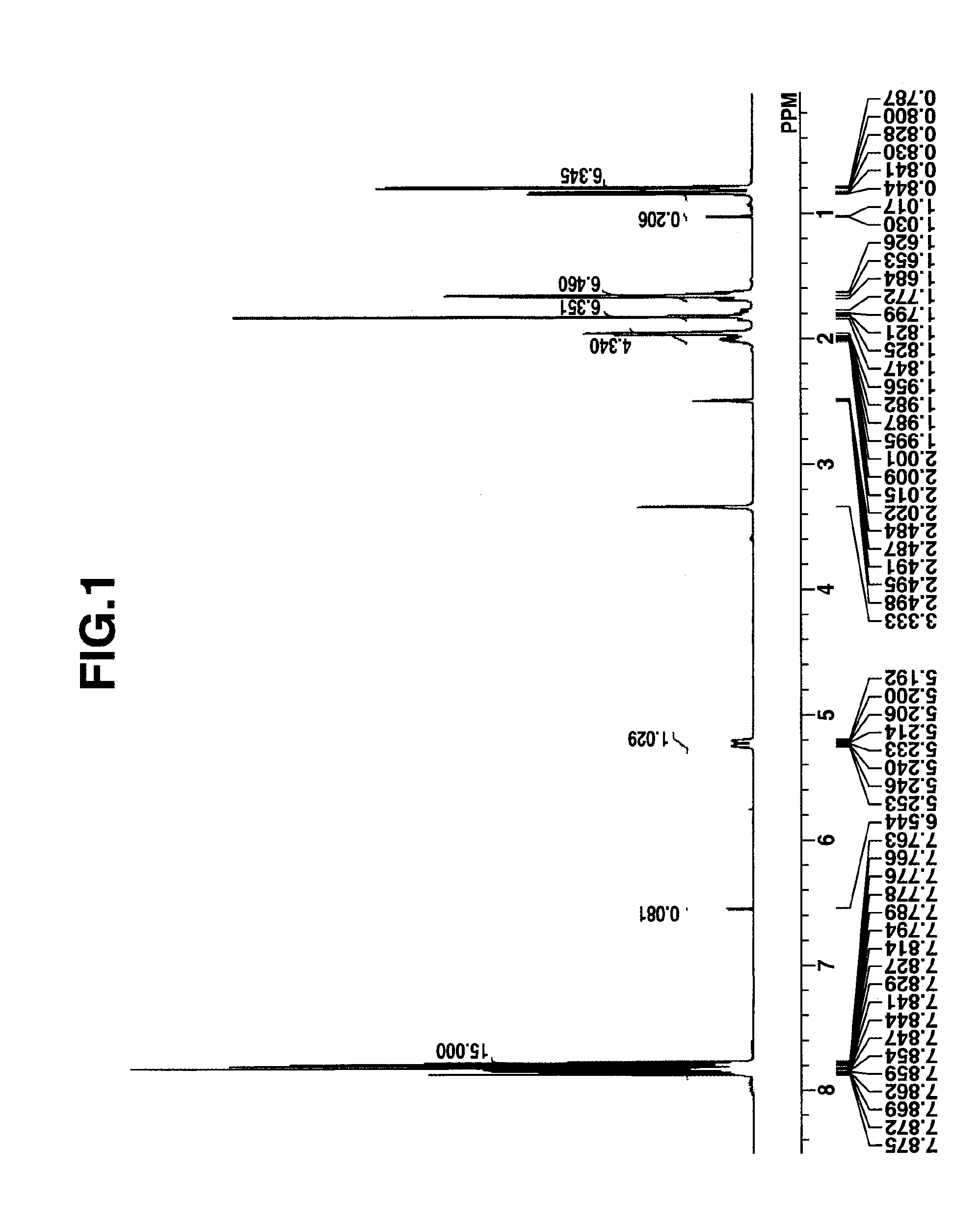Sulfonium salt, chemically amplified resist composition, and pattern forming process
a technology of chemical amplification and resist, which is applied in the direction of photosensitive materials, instruments, photomechanical equipment, etc., can solve the problems of many problems, such as the index of pattern roughness and pattern profile, and the development of resist materials which are substantially non-leachable in water. , to achieve the effect of low lwr, good profile and high resolution
- Summary
- Abstract
- Description
- Claims
- Application Information
AI Technical Summary
Benefits of technology
Problems solved by technology
Method used
Image
Examples
synthesis example 1
[0149]Synthesis of Carboxylic Acid Sulfonium Salts
[0150]Several carboxylic acid sulfonium salts were synthesized according to the following formulation.
synthesis example 1-1
[0151]Synthesis of 1-(difluoromethoxycarbonylmethyl)-2-methyl-propyl 1-adamantanecarboxylate (Intermediate 1)
[0152]In 100 g of methylene chloride were dissolved 16 g of methyl 2,2-difluoro-3-hydroxy-4-methylpentanoate, synthesized according to the method described in JP-A 2012-097256, and 19 g of 1-adamantanecarbonyl chloride. Under ice cooling, a mixture of 11 g of triethylamine, 1 g of 4-dimethylaminopyridine, and 20 g of methylene chloride were added dropwise to the solution. The reaction solution was aged overnight, after which it was quenched with 5 wt % hydrochloric acid, washed with water, and concentrated. Methyl isobutyl ketone was added to the concentrate, which was concentrated again. On distillation of the concentrate, there was obtained 20 g of the target compound, 1-(difluoromethoxycarbonylmethyl)-2-methyl-propyl 1-adamantanecarboxylate as colorless oily matter (yield 67%).
synthesis example 1-2
[0153]Synthesis of Triphenylsulfonium 3-(adamantane-1-carbonyloxy)-2,2-difluoro-4-methylpentanoate (Q-1)
[0154]To a mixture of 10 g of 1-(difluoromethoxycarbonyl-methyl)-2-methyl-propyl 1-adamantanecarboxylate, prepared in Synthesis Example 1-1, 50 g at 1,4-dioxane, and 20 g of water was added 4.8 g of 25 wt % sodium hydroxide. The reaction solution was stirred for 2 hours, after which it was washed with n-hexane, obtaining an aqueous solution of sodium 3-(adamanate-1-carbonyboxy)-2,2-difluoro-4-methylpentanoate. To this solution, 48 g of an aqueous solution of triphenylsulfonium chloride and 200 g of methylene chloride were added. After stirring for 30 minutes, the organic layer was taken out, washed with water, and concentrated under reduced pressure. Methyl isobutyl ketone was added to the concentrate, which was concentrated again. Diisopropyl ether was added to the concentrate for crystallization. The resulting solid was dried in vacuum, obtaining 15 g of the target compound, tri...
PUM
| Property | Measurement | Unit |
|---|---|---|
| refractive index | aaaaa | aaaaa |
| feature size | aaaaa | aaaaa |
| boiling point | aaaaa | aaaaa |
Abstract
Description
Claims
Application Information
 Login to View More
Login to View More - R&D
- Intellectual Property
- Life Sciences
- Materials
- Tech Scout
- Unparalleled Data Quality
- Higher Quality Content
- 60% Fewer Hallucinations
Browse by: Latest US Patents, China's latest patents, Technical Efficacy Thesaurus, Application Domain, Technology Topic, Popular Technical Reports.
© 2025 PatSnap. All rights reserved.Legal|Privacy policy|Modern Slavery Act Transparency Statement|Sitemap|About US| Contact US: help@patsnap.com



